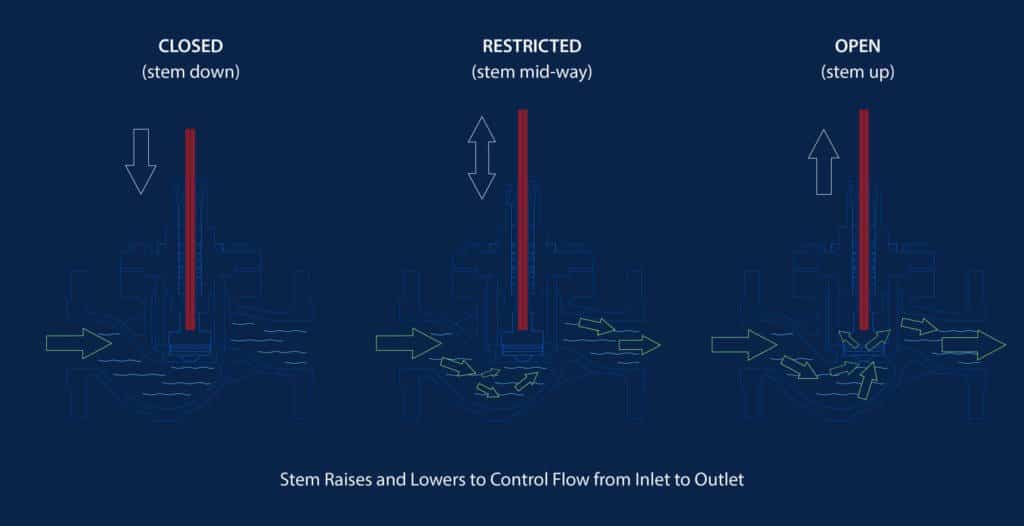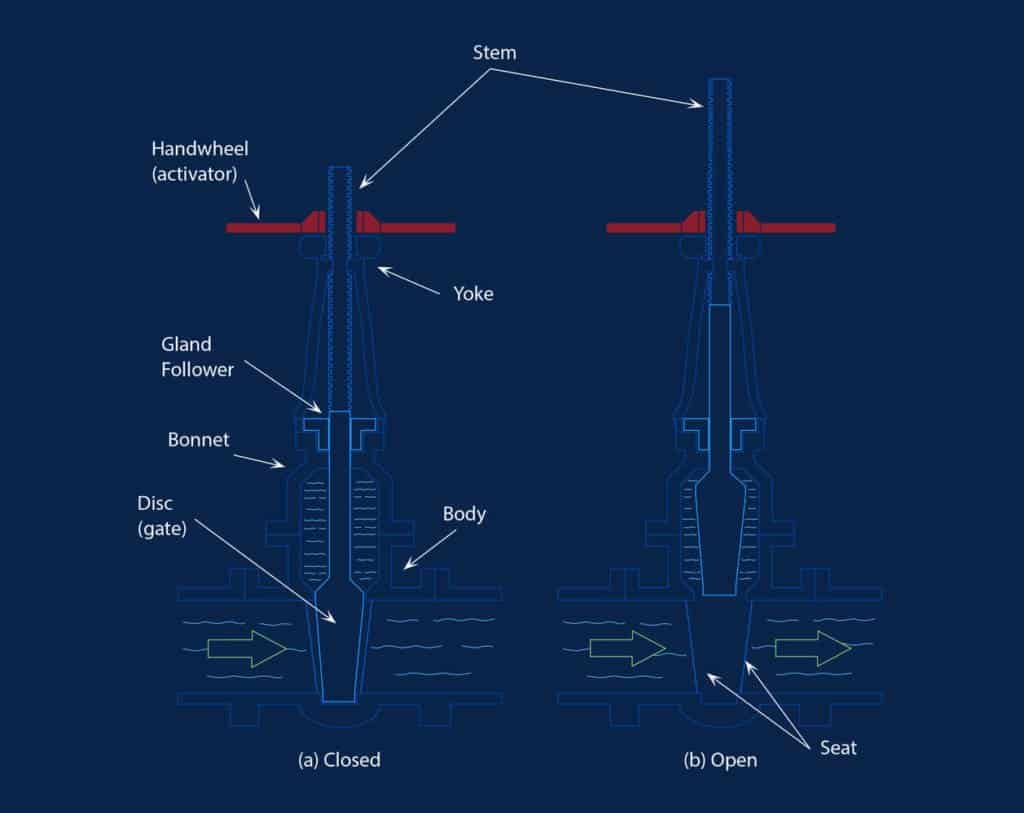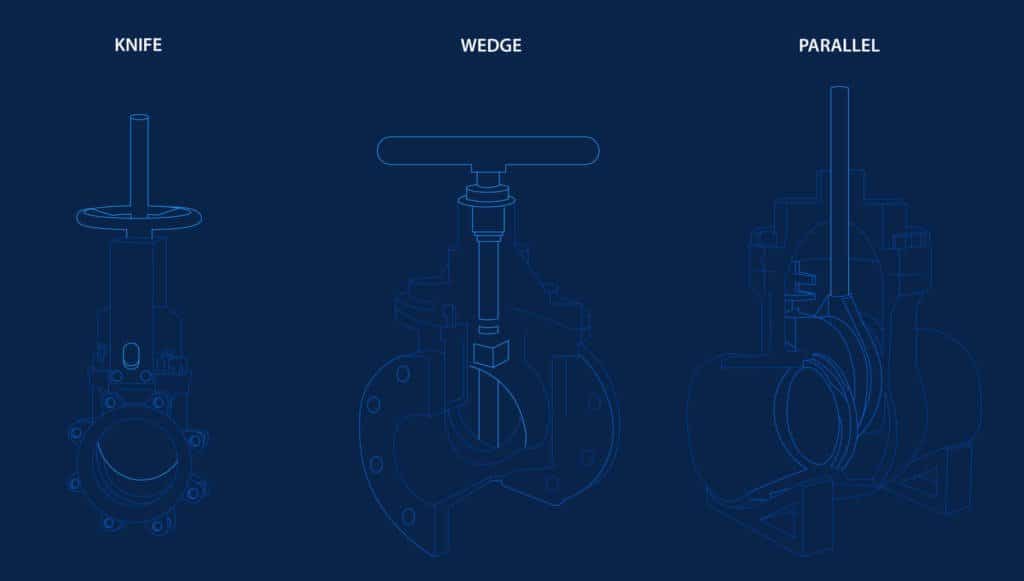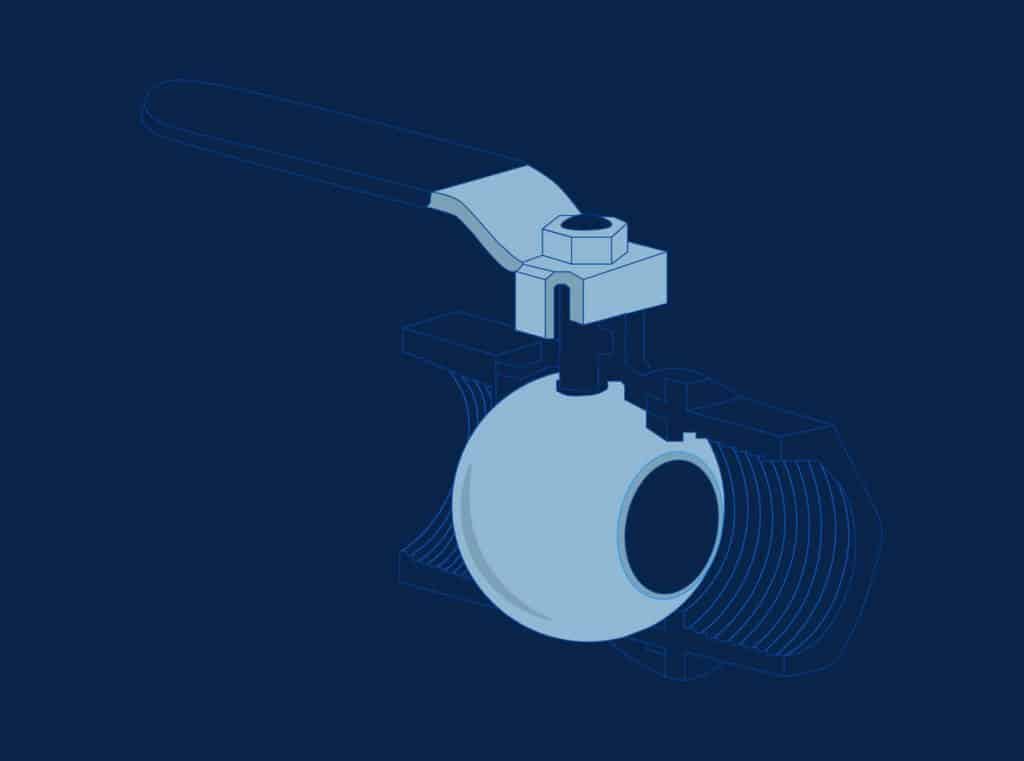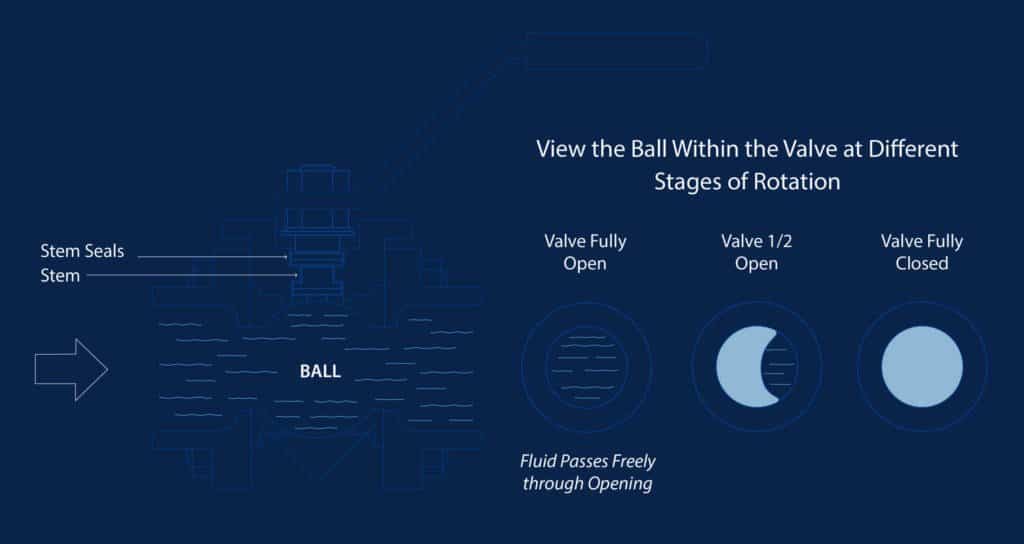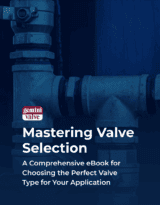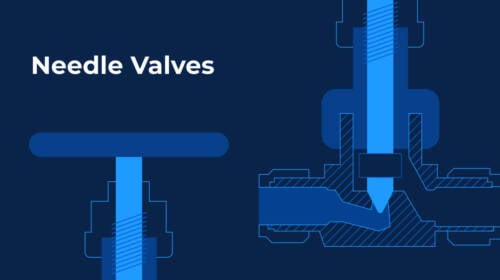Globe Valves vs. Gate Valves vs. Ball Valves: Which Do You Need?

Whether you’re designing a piping system on an industrial scale or making repairs to residential plumbing, you’ll need to know what kinds of valves your system requires. In this post, we’ll cover the most common types of valves — globe, gate and ball — and discuss the applications in which they are most often used.
Globe Valves
Globe valves are a type of control valve used to stop, start and regulate the flow of media through a pipe. From the outside, they have a spherical body design; inside, a plug-like disc sits on the end of a threaded rotating stem, which raises and lowers to control media flow. Globe valves are part of the linear motion valve family, which means that the valve mechanism moves along a straight line.
Globe valves provide a tight seal with low chances of leakage, which is why they are a common choice in high-pressure, industrial piping systems.
How Do Globe Valves Work?
Globe valves are designed so that the media flowing through them does not travel in a straight line. Rather than encountering a perpendicular blockage at the valve, the media must take a slight vertical detour up through the valve cavity, where it meets the plug disc. As the valve stem is turned via wheel and raises to allow media through, the disc moves parallel to the flow. The position of the stem tells operators whether the valve is open or closed.
This vertical movement is what enables the globe valve to regulate media flow, rather than simply stopping or starting it. The distance between the disc and the seat determines the flow rate: the farther apart the disc and seat are, the higher the volume of media passing through. Globe valves are ideal for throttling, or regulating the flow of media while in a partially open position, and make starting and stopping flow less abrupt which can help prevent water hammer.
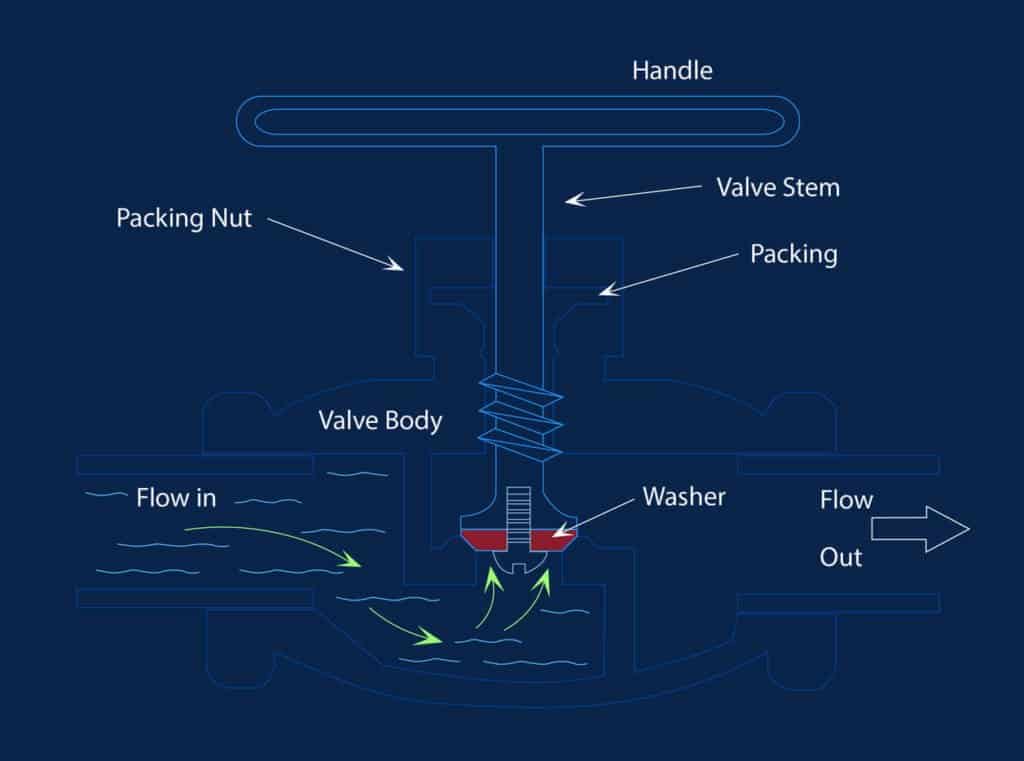
Most of the working parts of a globe valve lie inside the cavity, and access to the internal components is through the top; this is known as top-entry design.
Gate Valves
Gate valves are linear motion valves that are used only to start or stop media flowing through a pipe. They are considered shutoff valves instead of control valves, since they are not ideal for throttling.
Gate valves are designed with a flat or wedge-shaped disc on the end of a threaded stem, which is turned via a wheel and raises and lowers to operate the valve. Gate valves provide a tight shutoff, and as such are commonly used for isolating media. Because they do not force media to change course (as in a globe valve) gate valves cause little pressure drop.
Gate and globe valves often work in tandem inside a piping system, and are the two most common types of valves. Gate valves can be designed with rising or non-rising stems, which helps when space optimization is critical.
How Do Gate Valves Work?
When a gate valve is activated, the stem will turn clockwise or counter clockwise to raise or lower the disc inside the pipe. In its closed position, the disc lodges between the seats in the base of the valve, providing a full stop at a right angle to the media flow. The disc can be shaped like a wedge, knife or parallel panel.
Most of a gate valve’s internal components are located in the top part of the valve body, through which they can be accessed for maintenance.
Gate valves have lower pressure drops than globe valves since the media is not diverted on its way through. Once open, the flow space is as large as the valve cavity and offers little resistance to flow. Gate valves are best for applications in which low-pressure drops are critical, and their multidirectionality makes them more versatile than unidirectional valves.
A downside to the gate valve is the thinness of the disc, which can fall out of alignment with the seat if vibrations from the media become too strong. Because of this, it’s important that the gate stay in either the fully open or fully closed position — too much vibration from pressurized media can cause damage and shorten the life of the valve. Due to the abruptness of their shutoff, gate valves can also trigger water hammer, which can cause major damage in industrial settings.
Gate valves are best in applications where tight sealing or isolation of media is required. Gate valves cannot handle a strong flow of media while in a partially open position, and thus are not used for regulating flow. They can be found in industrial oil and gas piping systems, irrigation networks and marine industries; for example, gate valves with non-rising stems are popular on ships since they take up less vertical space.
Compared to globe or ball valves, gate valves are less durable over long periods of time and more prone to leaks.
Ball Valves
Unlike gate or globe valves, ball valves are a type of quarter-turn valve that utilizes a bead shaped ball with a hole in the middle to control the flow of media. Called a bore or port, the hole in the middle of the ball allows media to pass through the valve body when opened, and is rotated 90 degrees to stop flow. The port is aligned perpendicular to the valve body in the closed position.
How Do Ball Valves Work?
Ball valves are multidirectional quarter-turn valves, since the rotating ball regulates the flow of media through the port. The stem that controls the rotation of the ball is attached to a perpendicular lever, or actuator. When the lever is parallel to the pipe, the valve is open; when the lever is at a right angle to the pipe, the valve is closed.
Ball valves can also be controlled by actuators: attachments that activate to open or close a valve. Actuators can be hydraulic, electric or pneumatic.
One characteristic of ball valves is their exponential flow rate, which means that the volume of media flowing through the valve increases or decreases at an exponential rate when the valve is opened or closed. This makes it more difficult to precisely calibrate the flow rate, and is why ball valves are generally not the first choice for throttling applications.
Ball valves are favored for their compact design, fast cycle speeds and long service life, which make them the choice for applications that require durable, reliable on/off control such as in the oil, gas, automotive, chemical processing and manufacturing industries. Since such little motion is required to operate ball valves — no multi-turn rotating stem as in globe or gate valves — ball valves tend to last much longer and are less prone to corrosion or damage. If it’s necessary to keep a valve closed for long periods of time, a ball valve will provide the most secure seal.
Globe vs. Gate vs. Ball Valves: Pros and Cons
| Pros | Cons | |
| Glove Valves |
|
|
| Gate Valves |
|
|
| Ball Valves |
|
|
Which Type of Valve is Right for Your Application?
Now that you can discern between globe, gate and ball valves, you’ll be able to choose which valve is right for your application. Gemini Valve is your resource for all things ball valves — we can help point you in the right direction, no matter what type of valve you require. Get in touch with us today to ask a question or request a quote.
Elevate Your Professional Insight on Valve Selection
Our comprehensive eBook provides a deep understanding of valve types, selection criteria and industry applications. Equip yourself with the best.


